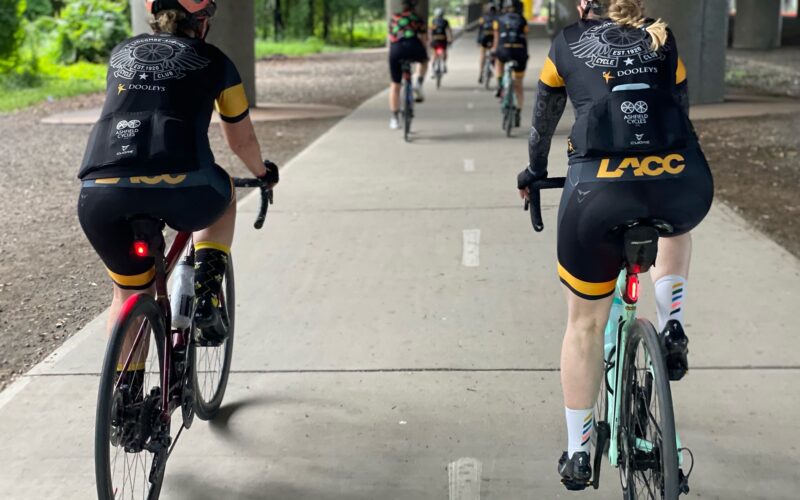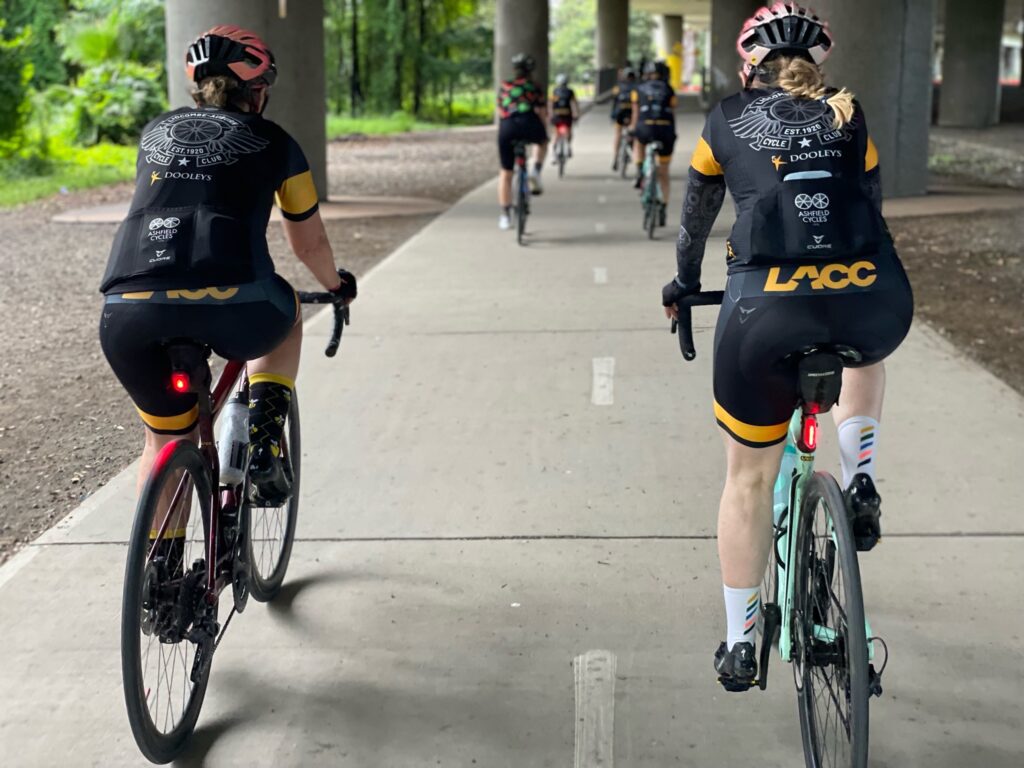A beginner’s guide to bunch ride calls and signals
When I started putting a list of bunch ride calls and signals for this post, I was surprised at how long the list became. The inspiration for this post came from a suggestion from a newbie rider during last week’s bunch ride (thanks Sharlene), and it wasn’t until I started writing it that I focused on how important consistent calls in a bunch can be.
When I first started riding, I didn’t think I needed to learn things like bunch ride calls. But cycling is like any other new pursuit, there’s always more to it once you get involved. If you want to know more about bunch riding etiquette in general, read my previous post, or this handy guide from Manly-Warringah Cycling Club.
The crux of the whole calls and signals thing is summed up in one very helpful word – communication. Bunch ride calls and signals exist so riders can communicate with each other consistently and clearly during a fast-paced pursuit like road cycling. They also need to be shared to be effective, the lead riders (who are effectively the eyes of the whole group) call or point out something, and riders behind them repeat the same until it reaches the riders at the rear.
And like any form of communication, they can be over-used. I liken it to the ‘boy who cried wolf’, if you call stuff out too often people start to ignore it, so use calls and signals only when you really need to alert other riders.
You’ll also find that bunch ride calls and signals vary from group to group, country to country, club to club, and some riders will use more calls and fewer signals, and vice versa. They can also vary depending on the situation like racing or mass participation ride so don’t take my list as gospel. This is simply a comprehensive list of all those calls I’ve heard on bunch rides. Some of them I use a lot, some of them very rarely. I also tend to use calls more than signals, so my list below is focused on calls.
- Turning left or right – depending on the situation you may use just your arm to signal a left or right turn, or you may also call it out to make sure every rider knows.
- Car up – to indicate a car is approaching from the opposite direction, or a car has stopped and is obstructing the road up ahead.
- Car back/passing – a car is approaching from the rear and is passing the bunch.
- Car left/car right – a car is approaching from the left or right, often used at an intersection or roundabout.
- Car door – a person has opened their car door or is about to open their car door up ahead. I also use this call to alert the driver and to educate drivers about the dangers of swinging their car door open without looking.
- Walker up – often used a bike path to alert the other riders that a pedestrian is walking towards you or in the same direction that you will need to pass.
- Bike up/Rider up – another cyclist is approaching from the opposite direction, or is going slower so will need to be passed (safely of course).
- Obstacle – pothole, stick, gravel, glass, speed hump – this one is usually item-specific but is really, really important so you literally call ‘pothole’, ‘glass’, etc. In some instances, you may also make it location-specific like ‘pothole middle’. Large obstacles can be extremely dangerous causing accidents, or flat tyres so if you use no other calls, this one is the biggy. You can also signal with your hand pointing towards the offending item.
- Single – in most road bunch rides you’ll ride two-by-two which is legal and encouraged in Australia, but there can be times when it’s safer or necessary to ride in a single file.
- Over/Take the lane – there will be many situations when the whole bunch needs to move across a lane of traffic and in this situation, the riders at the back are the best ones to make the call. The safest way to achieve it is for the riders at the front to put up a hand to indicate they need to move over and for the rear riders to call ‘Over’ when it’s safe to go across. ‘Hold’ can also be used if it is not safe.
- Clear left/right – if you are approaching an intersection where you need to turn the front riders can call that it is clear for other riders to proceed. Passing this call through the group is imperative because if the bunch is large, it may not be safe for all riders to proceed.
- Ease up – if riders are being left behind, riders in the middle of the pack can call to the front riders to ease the pace.
- All on – if the group gets split, the riders at the rear can call to let the rest of the group know that the group is back together.
- Stopping – used at Stop signs and traffic lights to stop the group.
- Slowing – this can be used as you approach red lights or other situations that involve slowing to stop, but can also be useful if someone unexpectedly slows down in front which has a knock-on effect.
- Lights – as the group approaches the red traffic lights, it can be useful to alert the bunch.
- Rolling – this is a useful call to let riders know that the bunch is starting, and also to let everyone know to stay with the bunch through an amber traffic light or similar (only when it’s safe to do so).
- Bikes passing – if another rider is passing the bunch, it is useful to alert all the riders. Most road cyclists will alert others if they are passing, but there are occasions when this doesn’t occur.
- Mechanical – if you have a problem like a flat tyre, your chain comes off, or some other mechanical issue it’s important to alert other riders so they know to stop and help.


